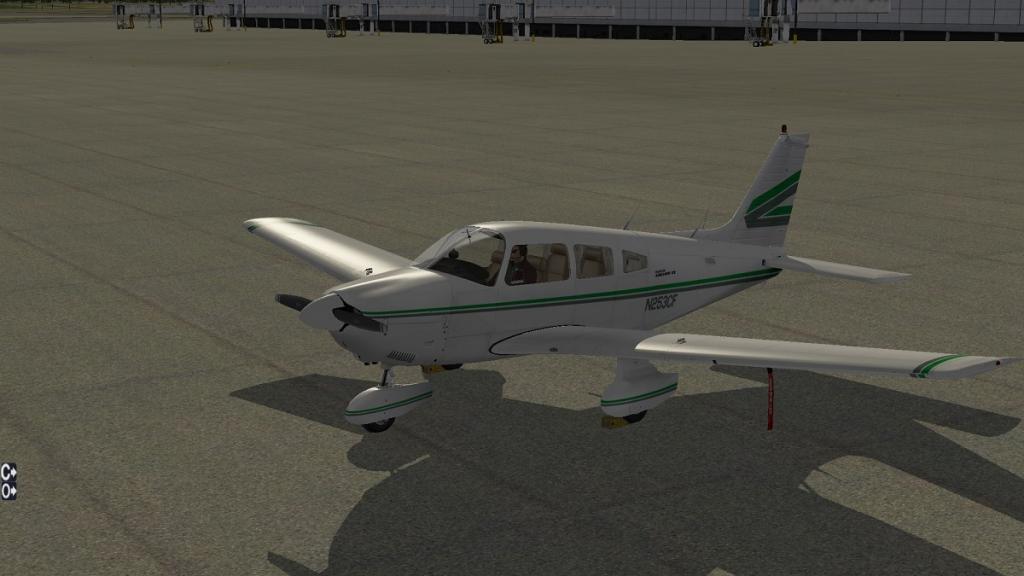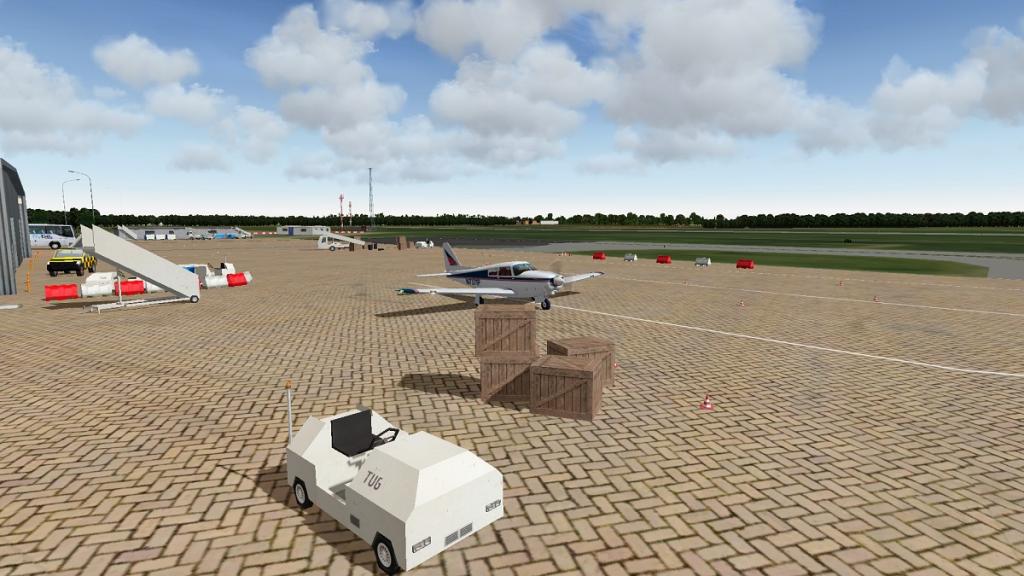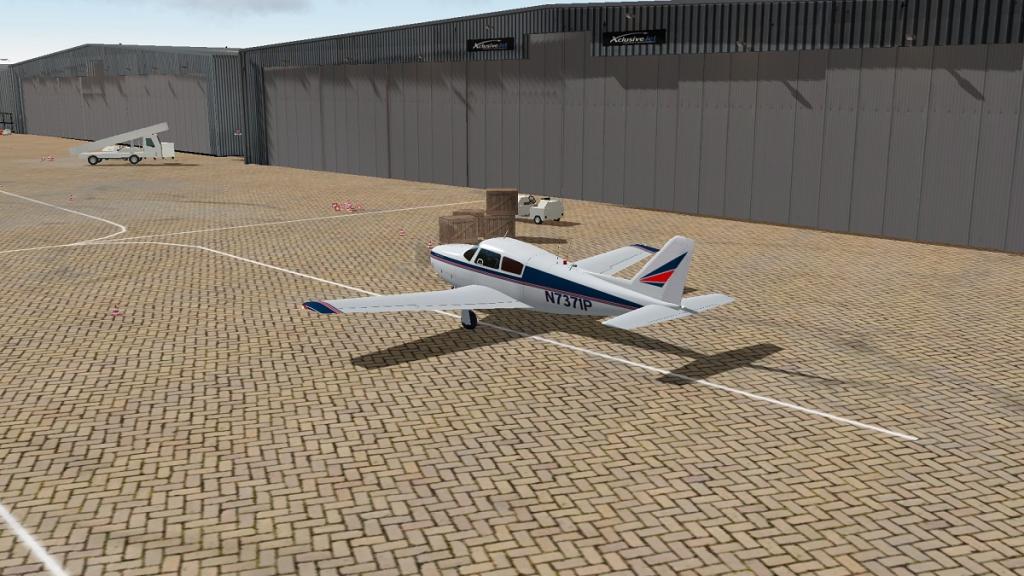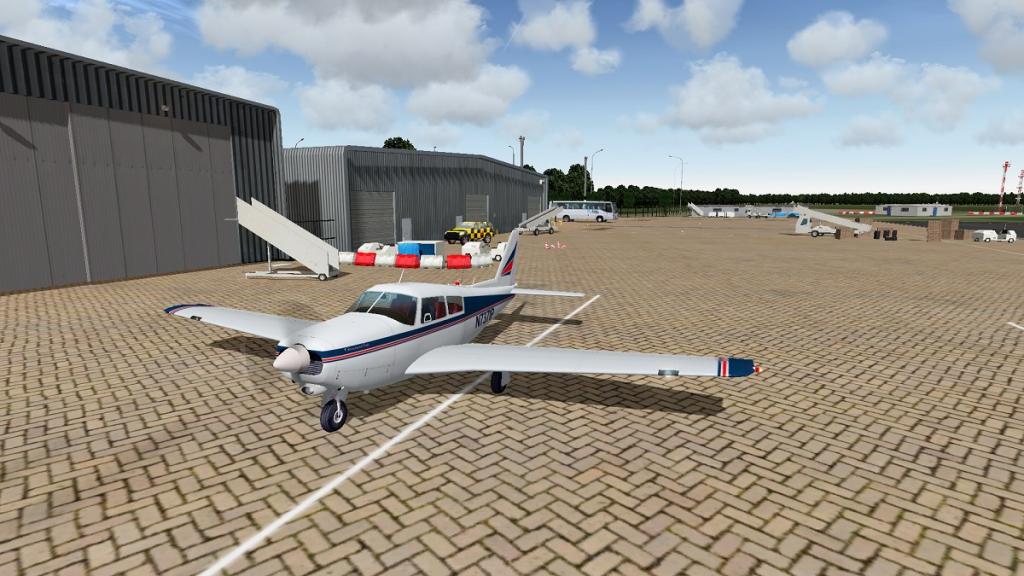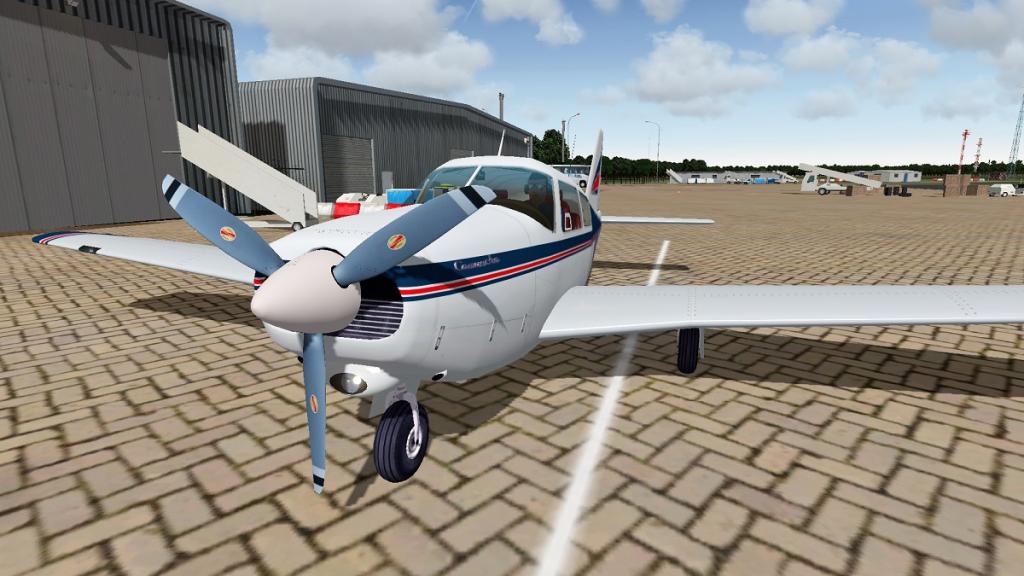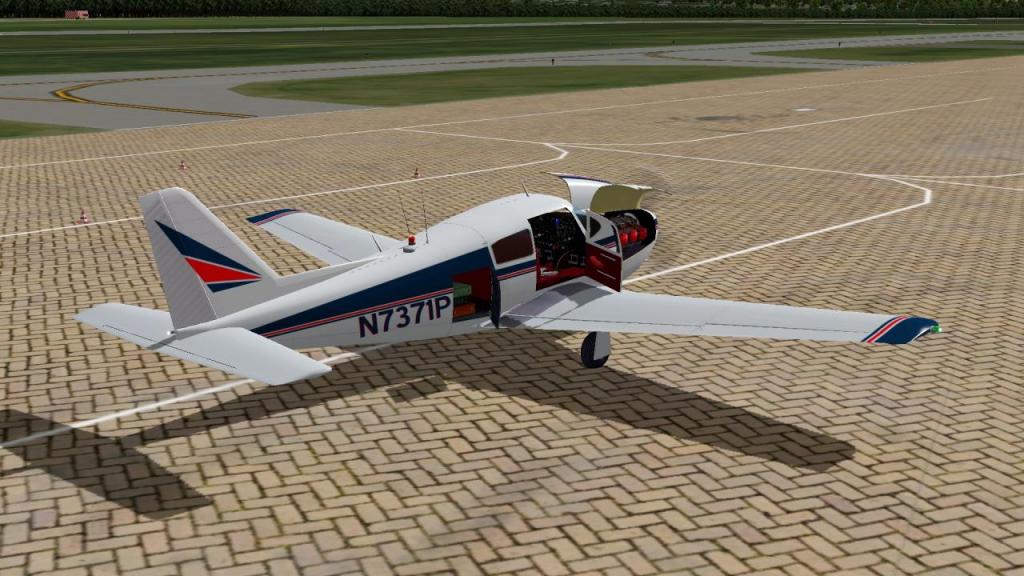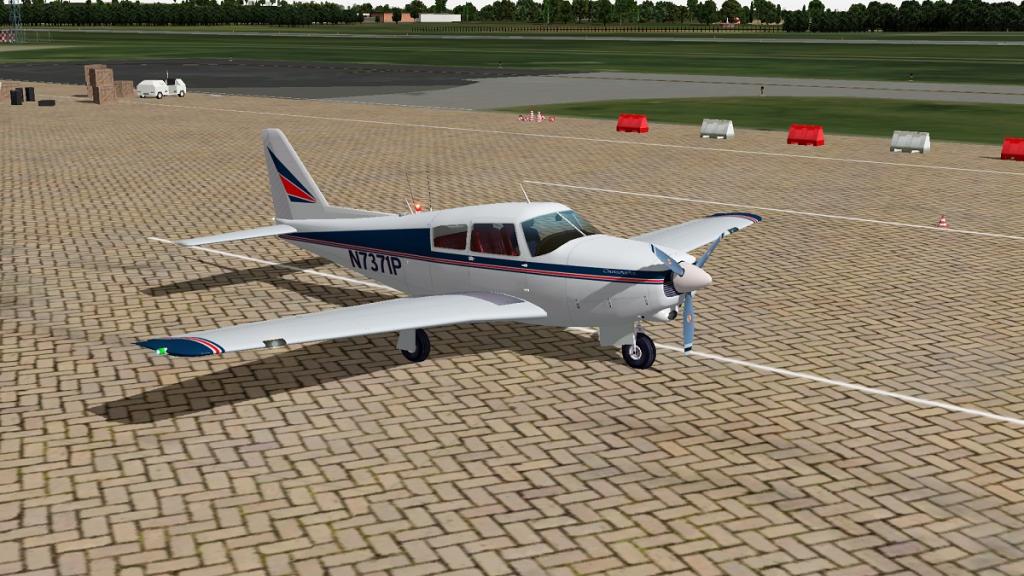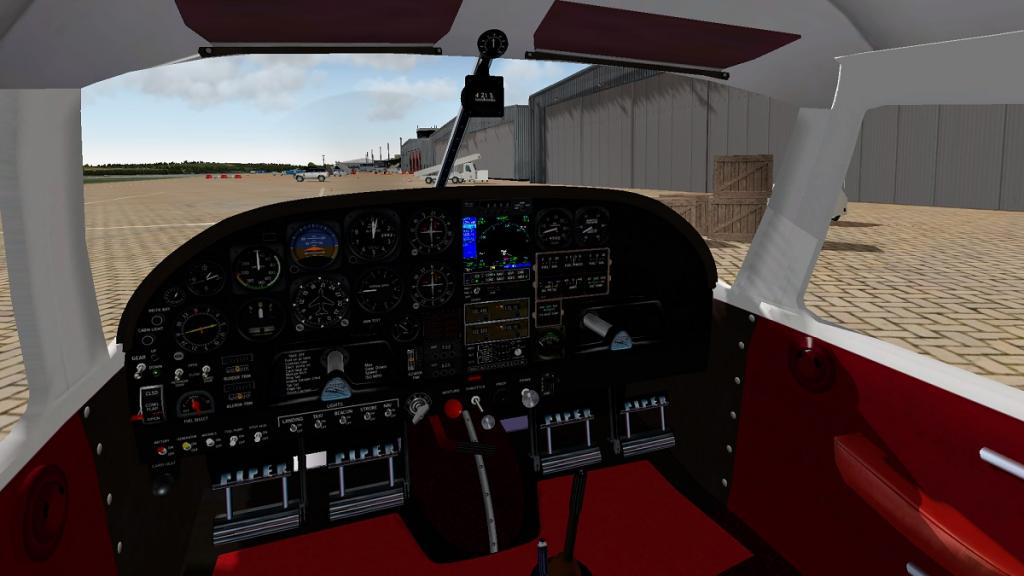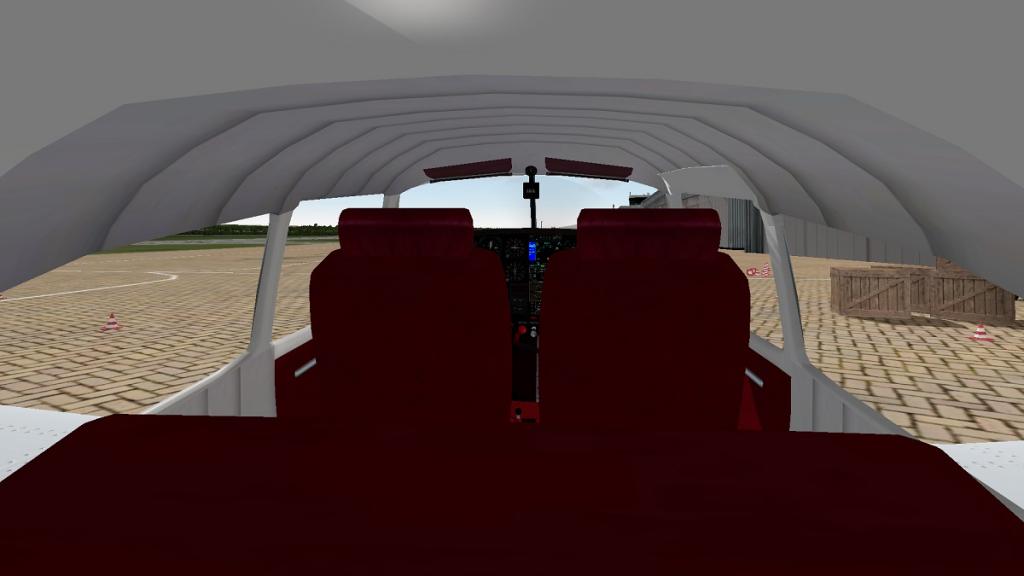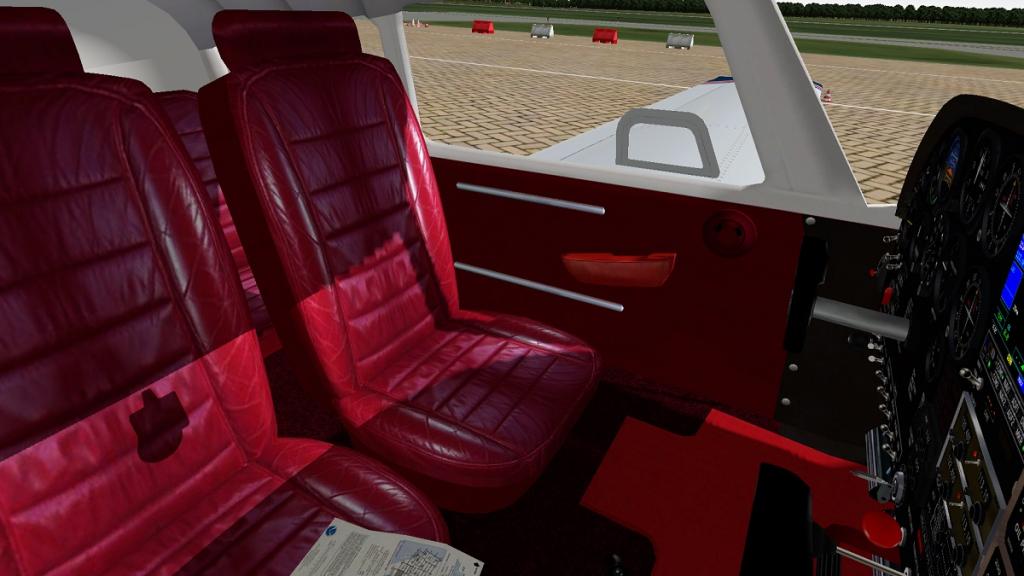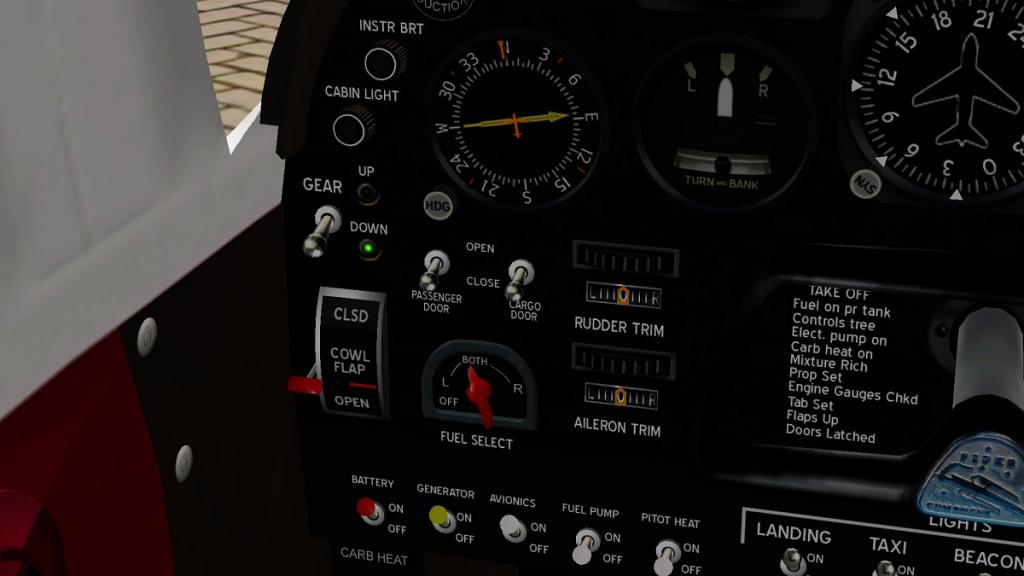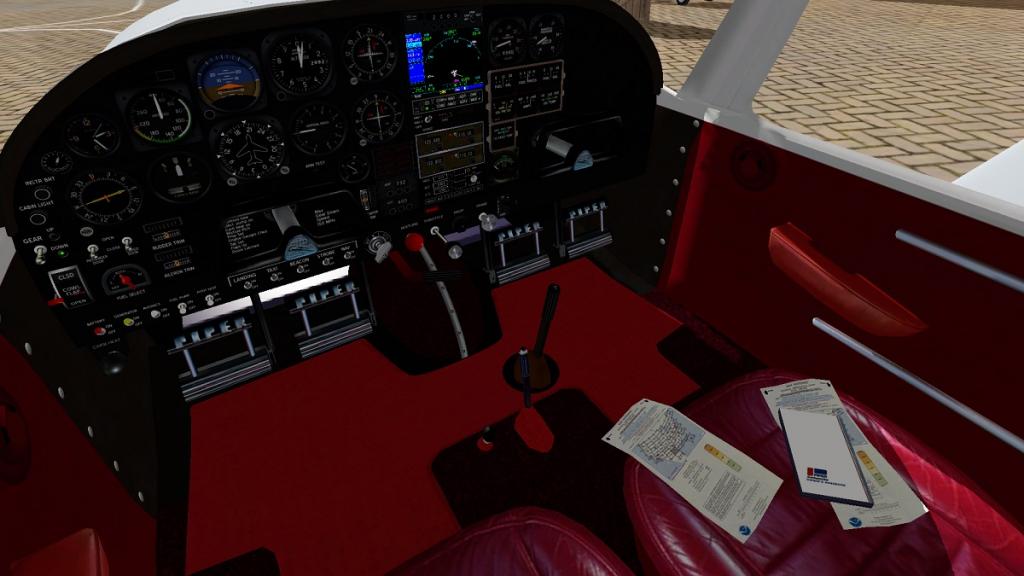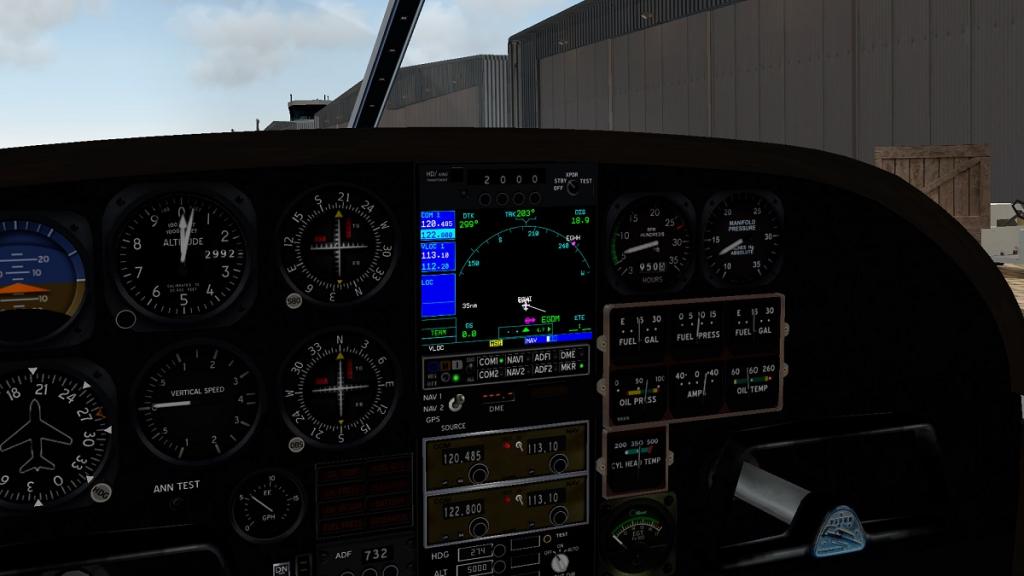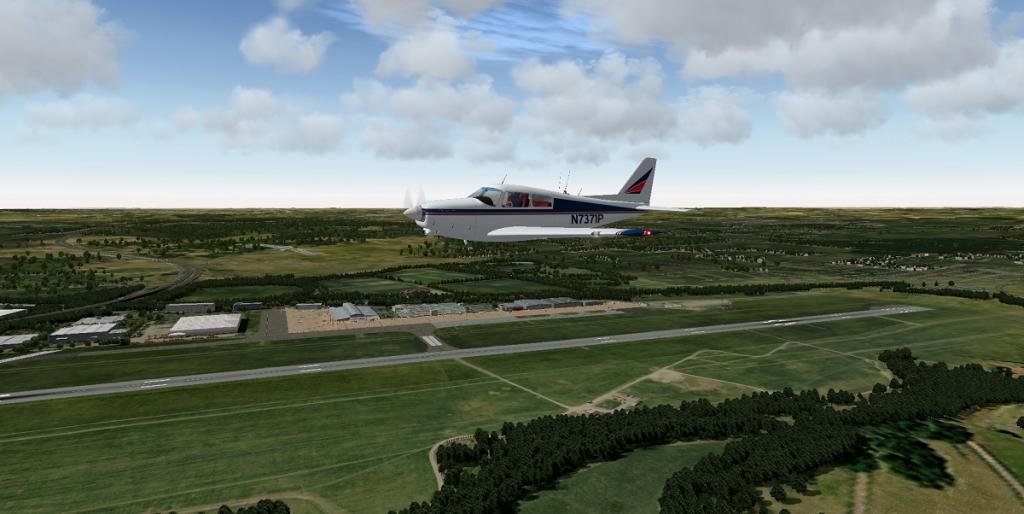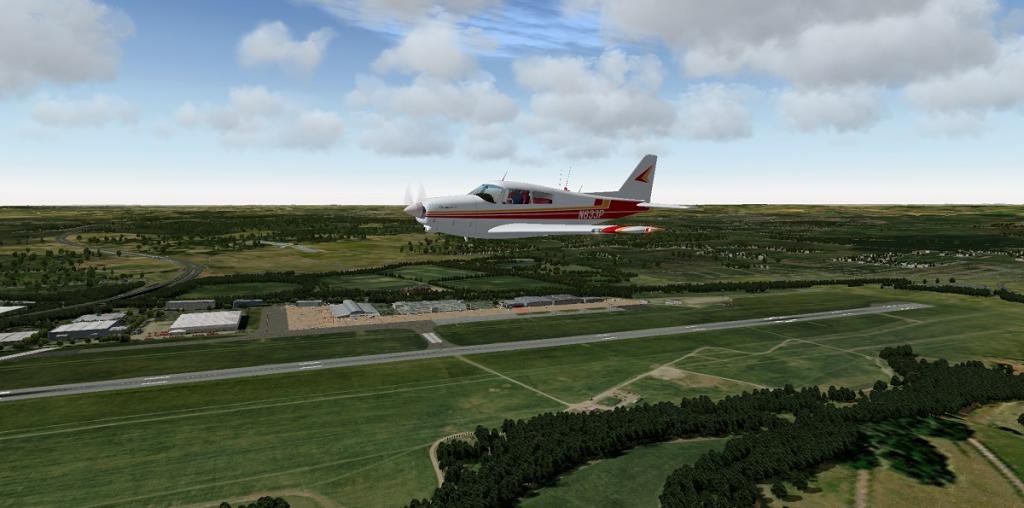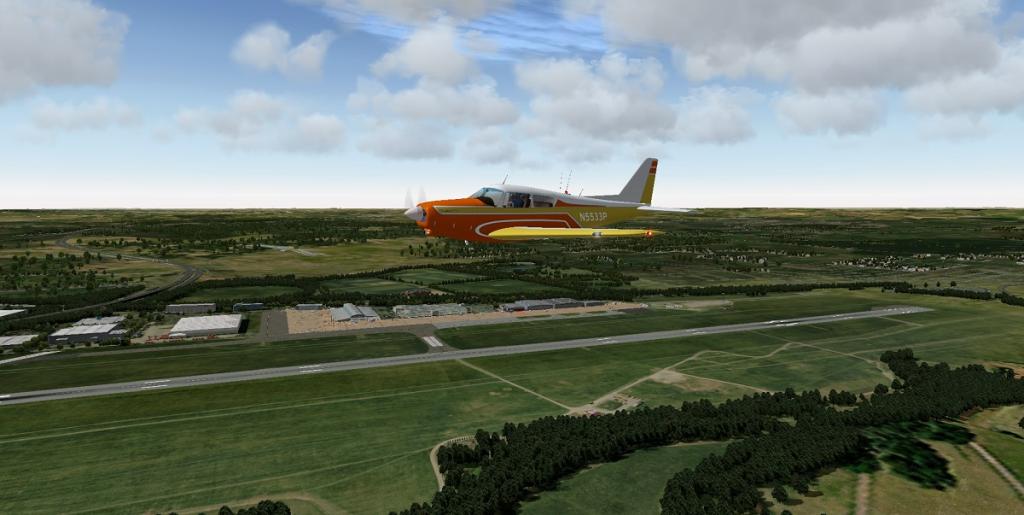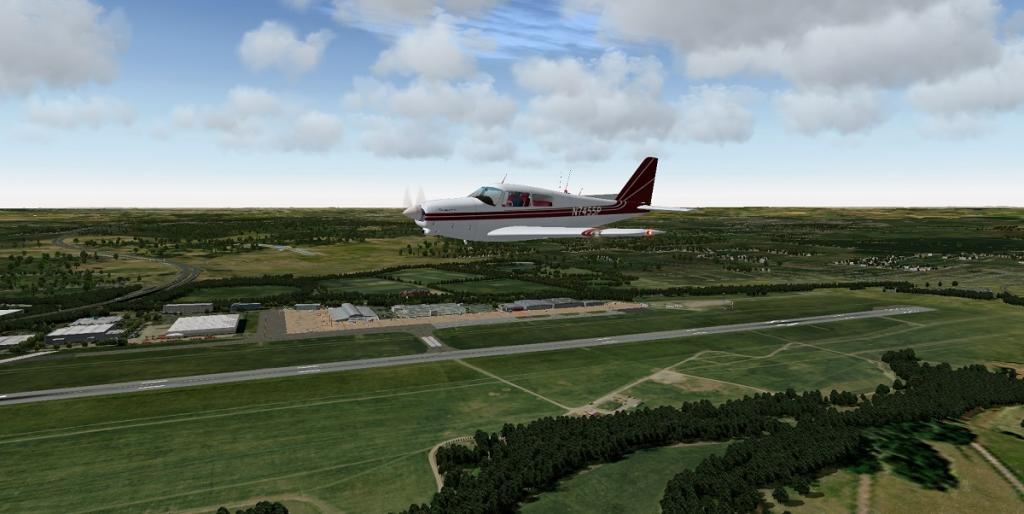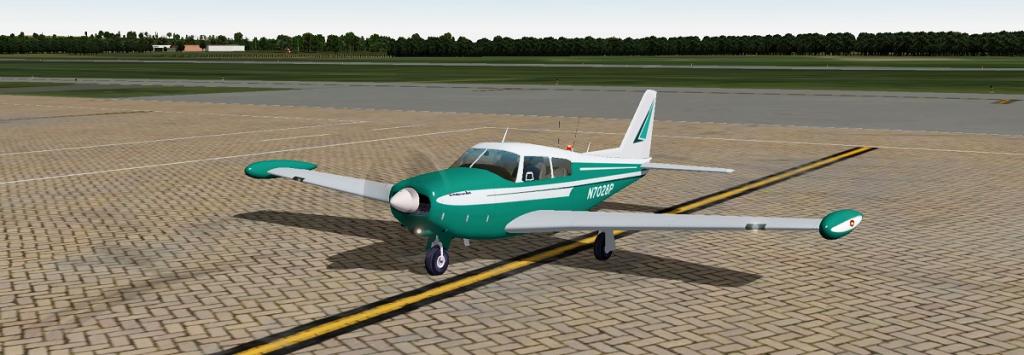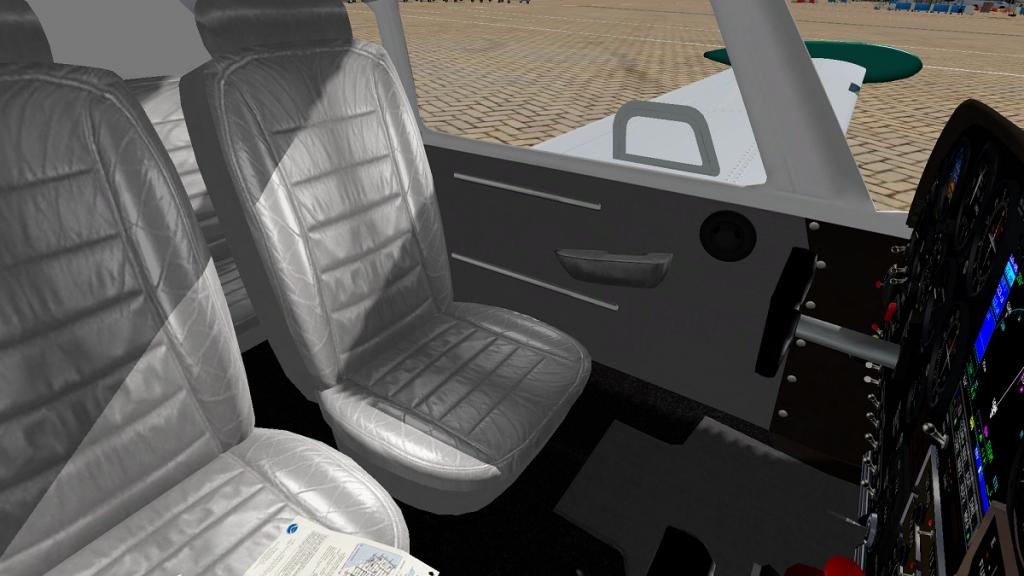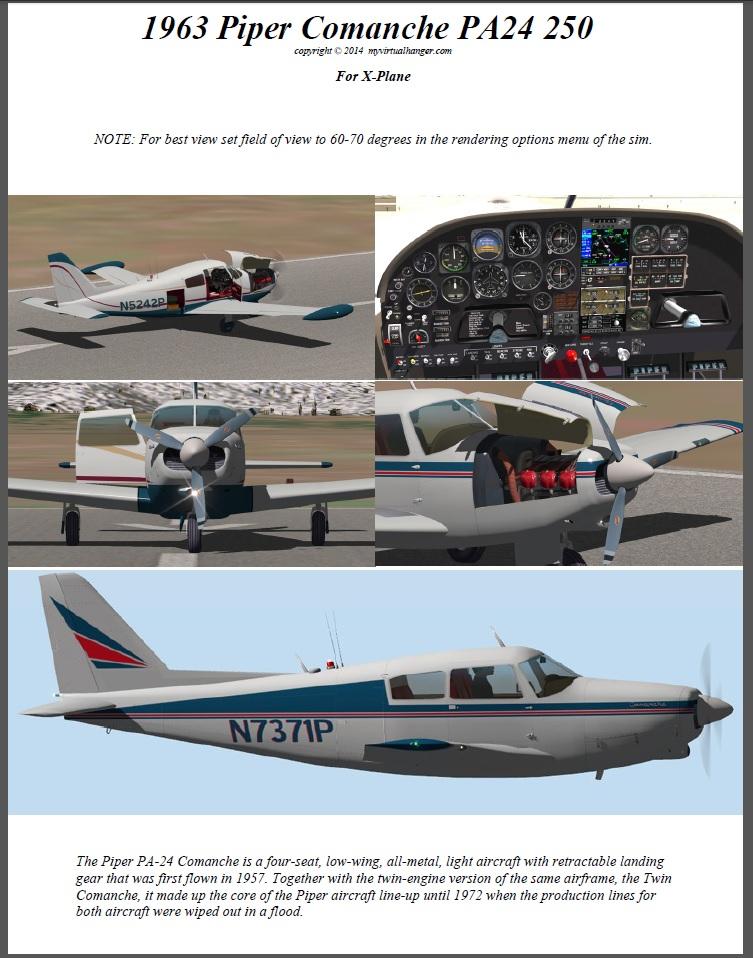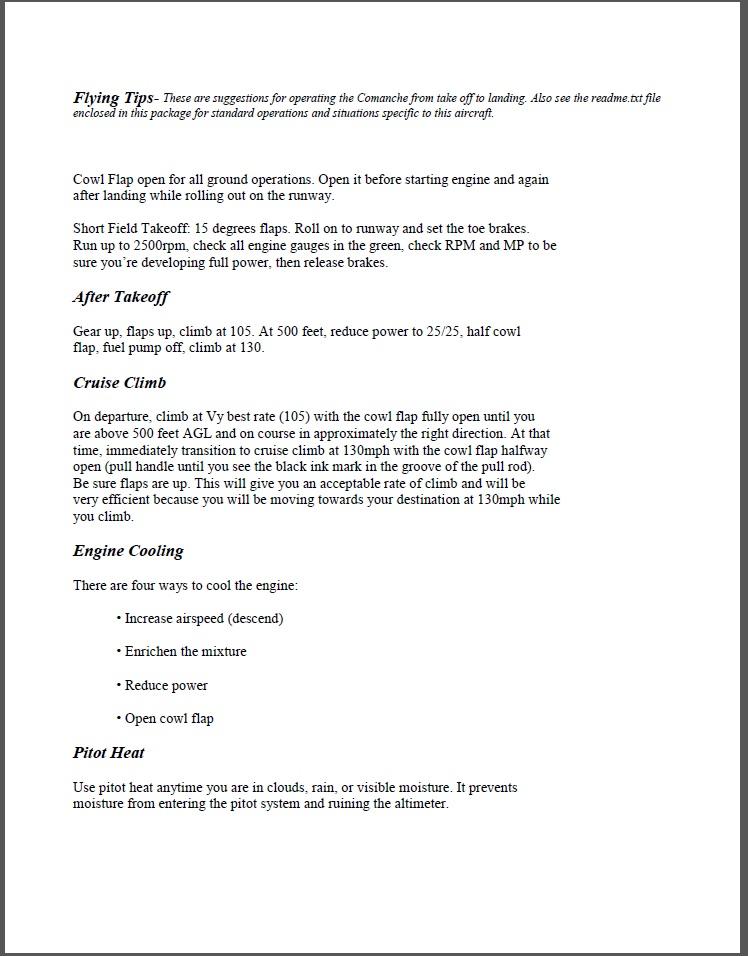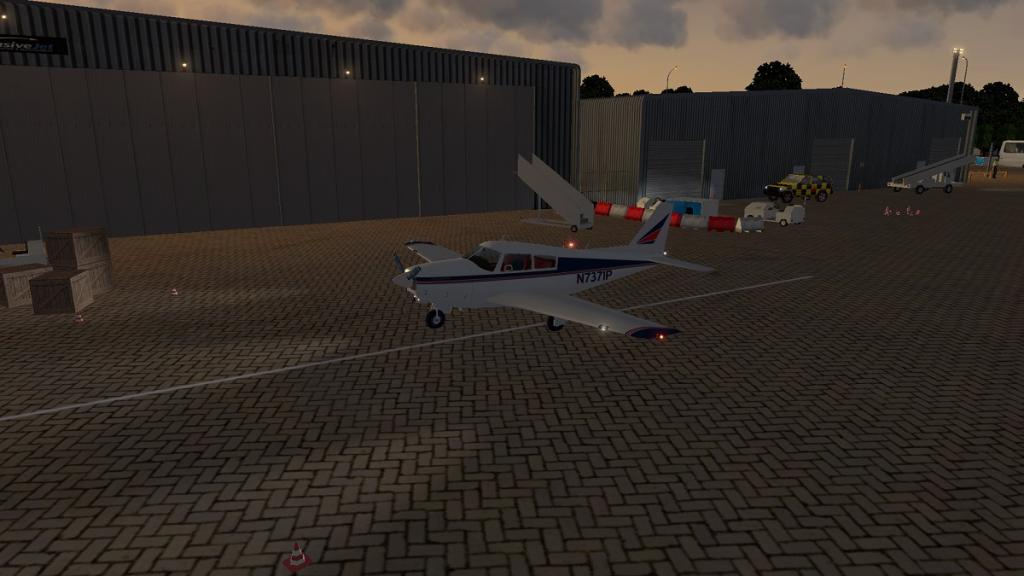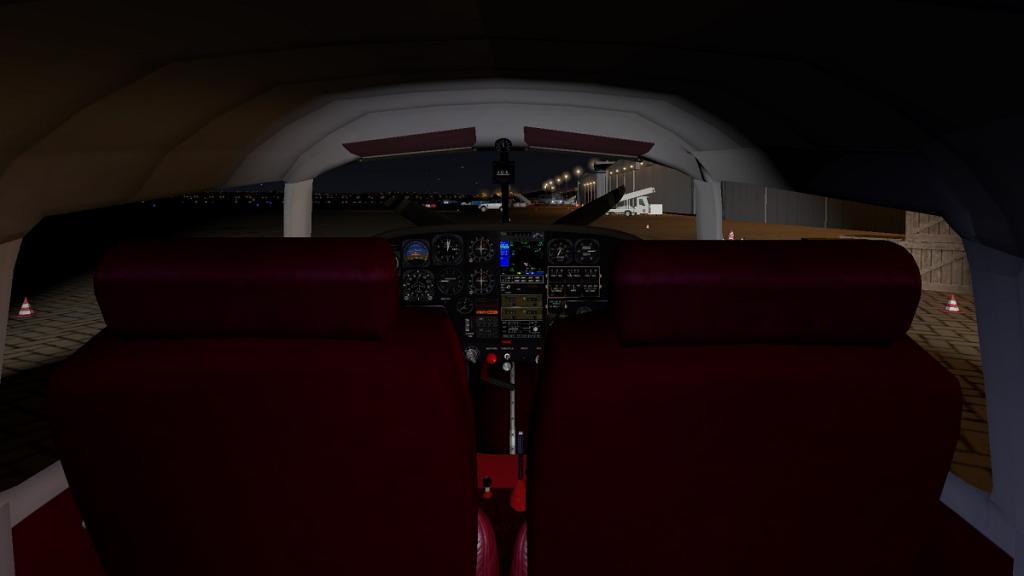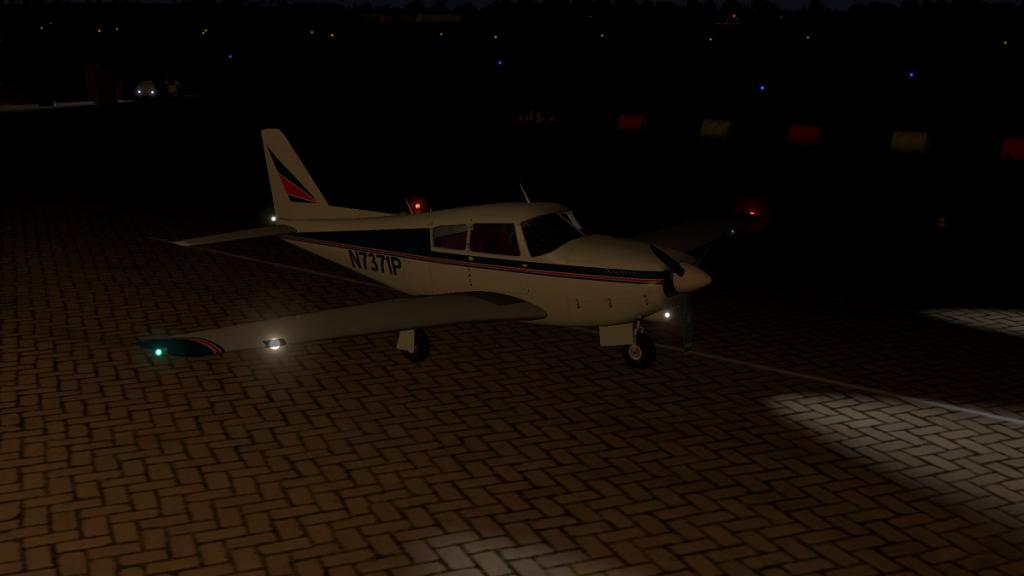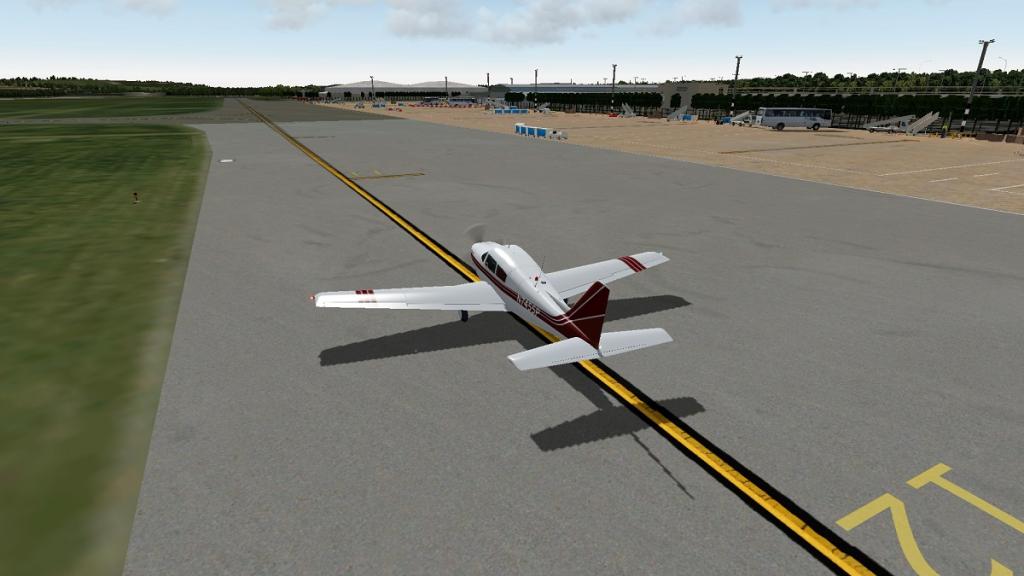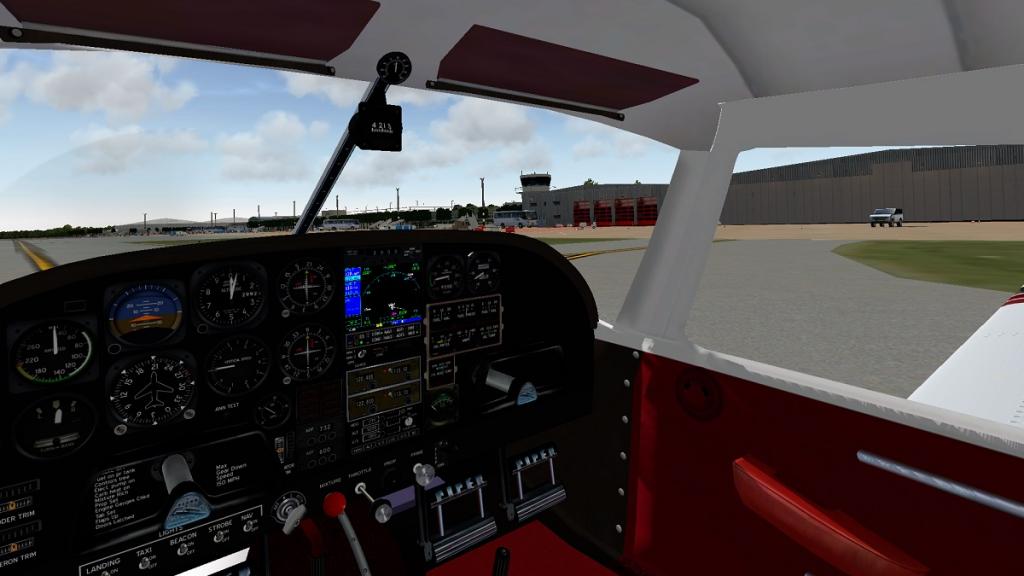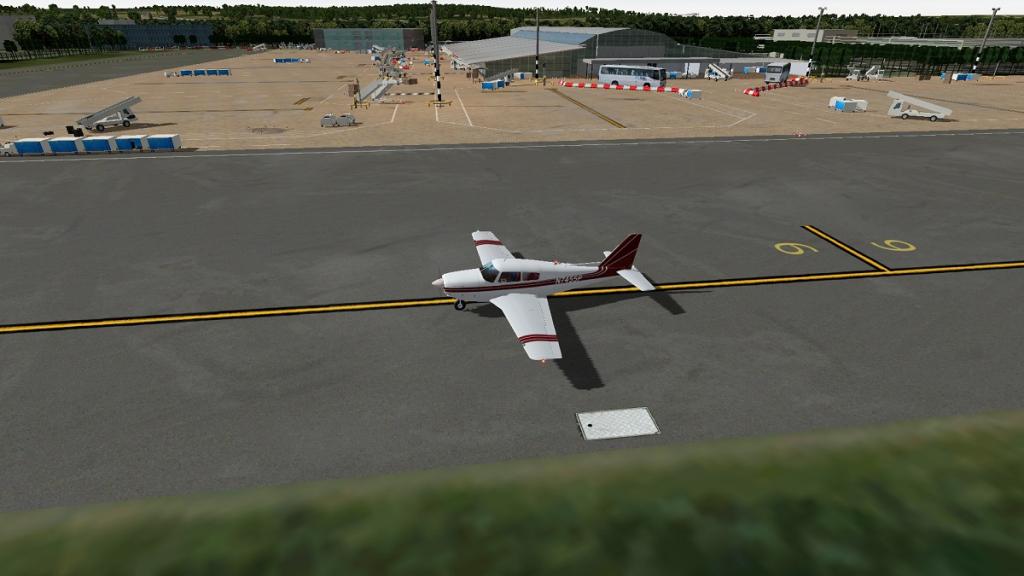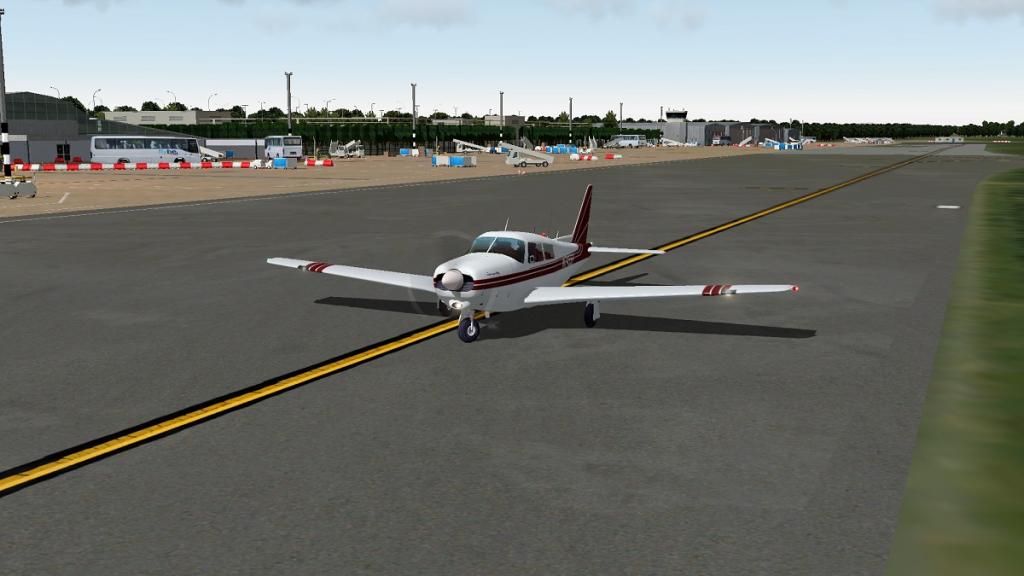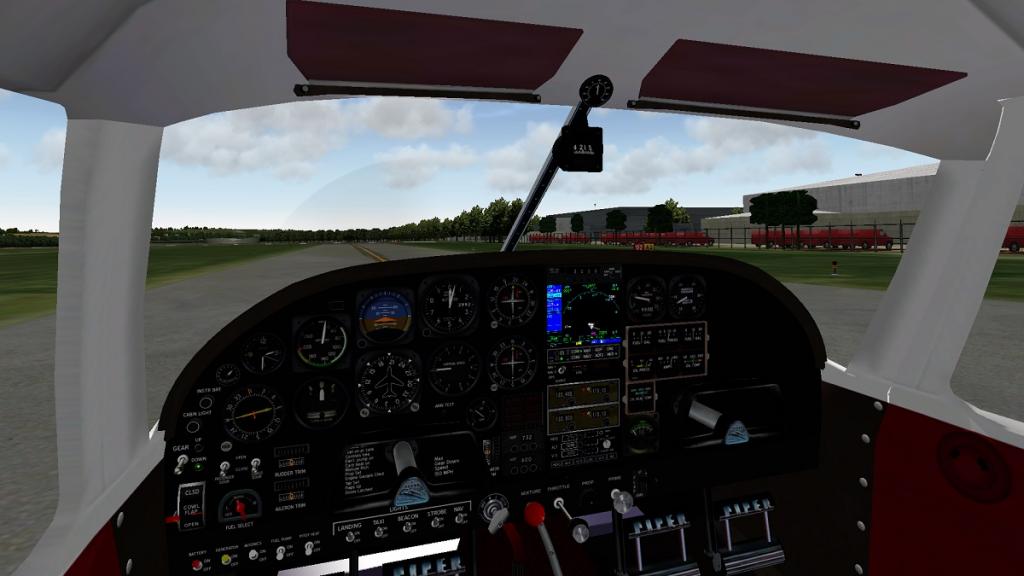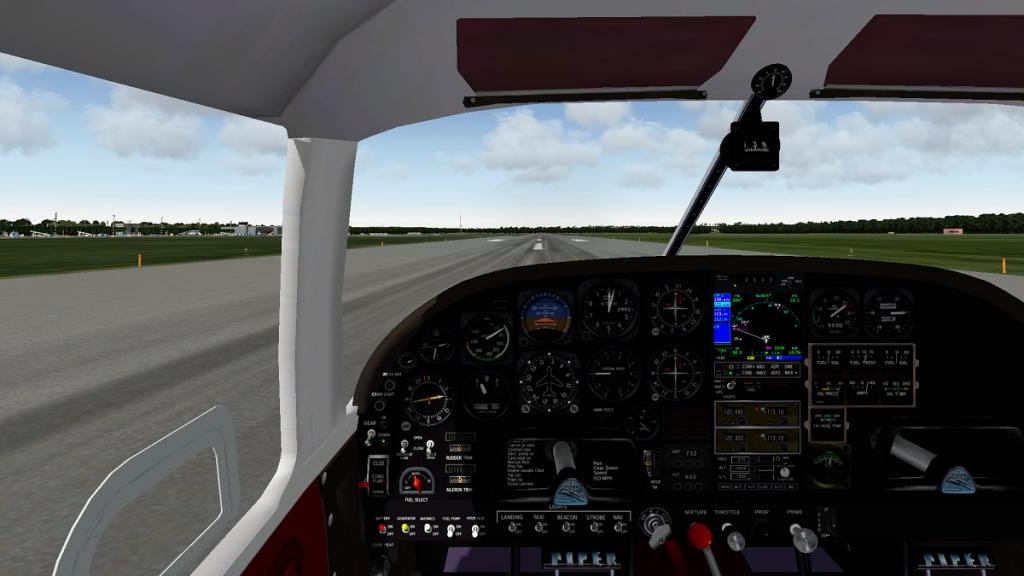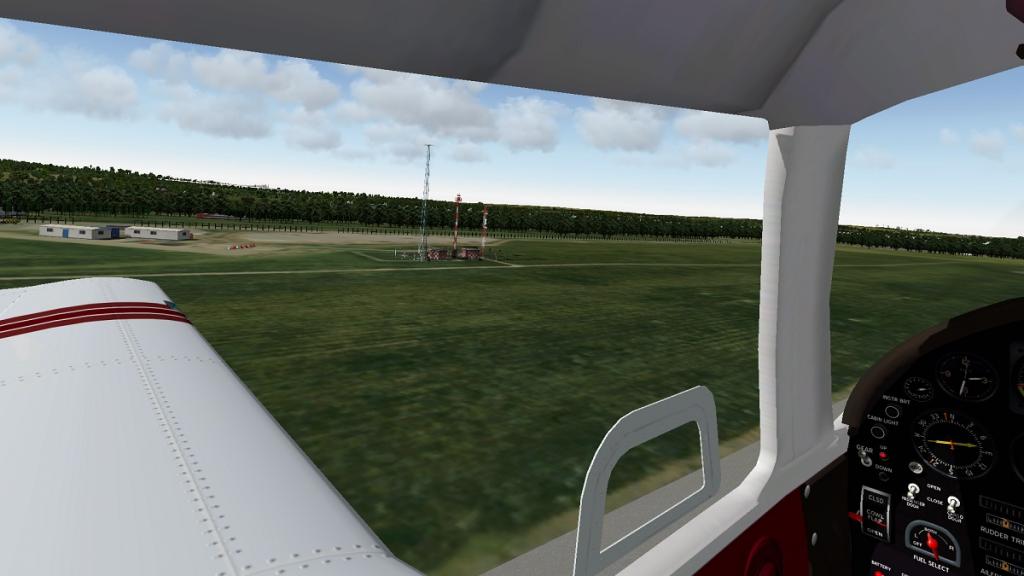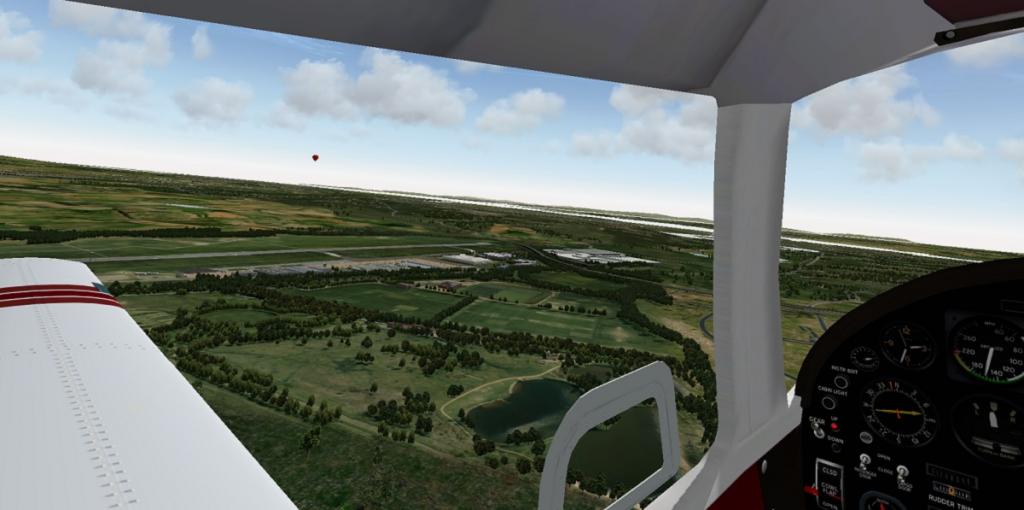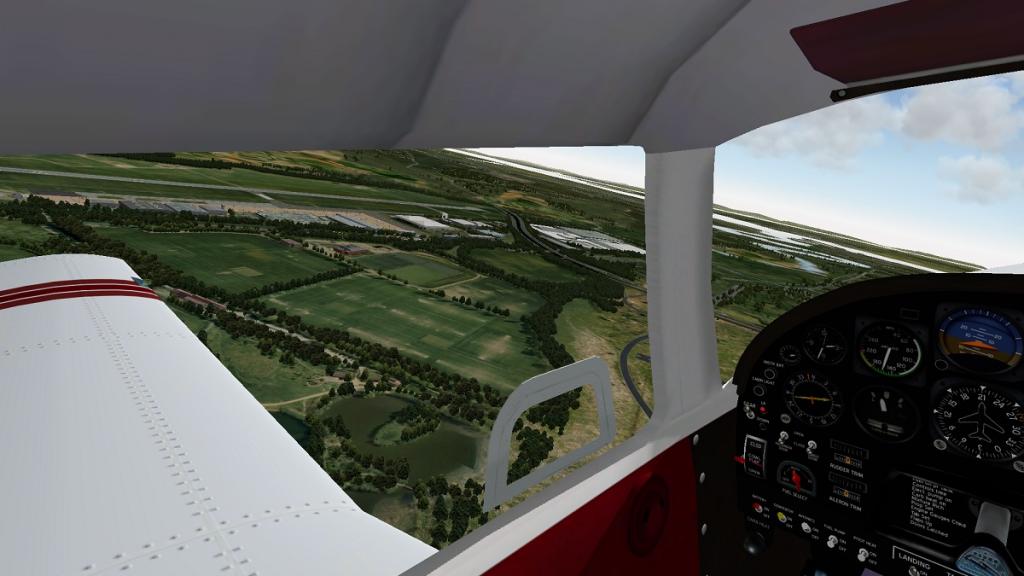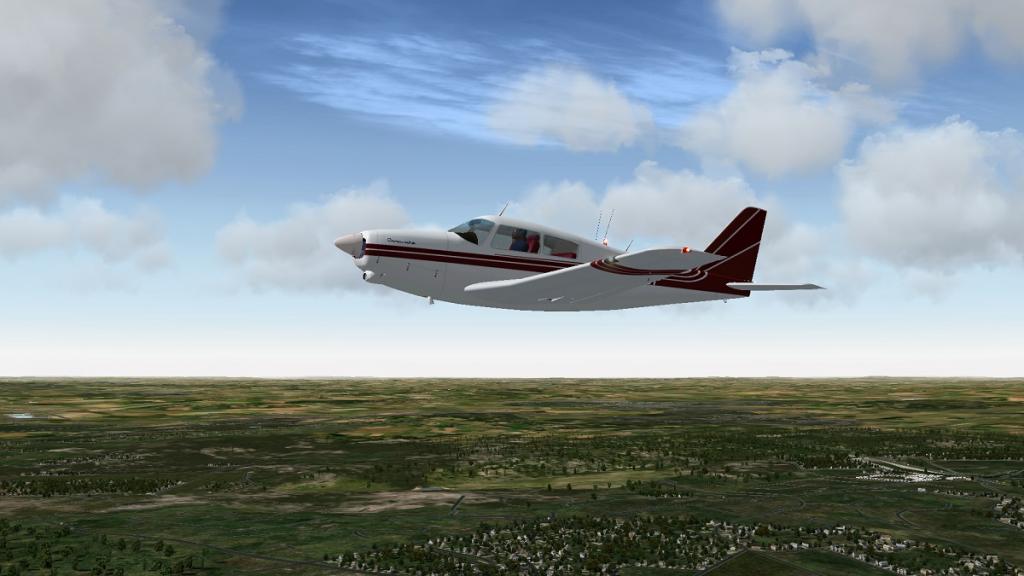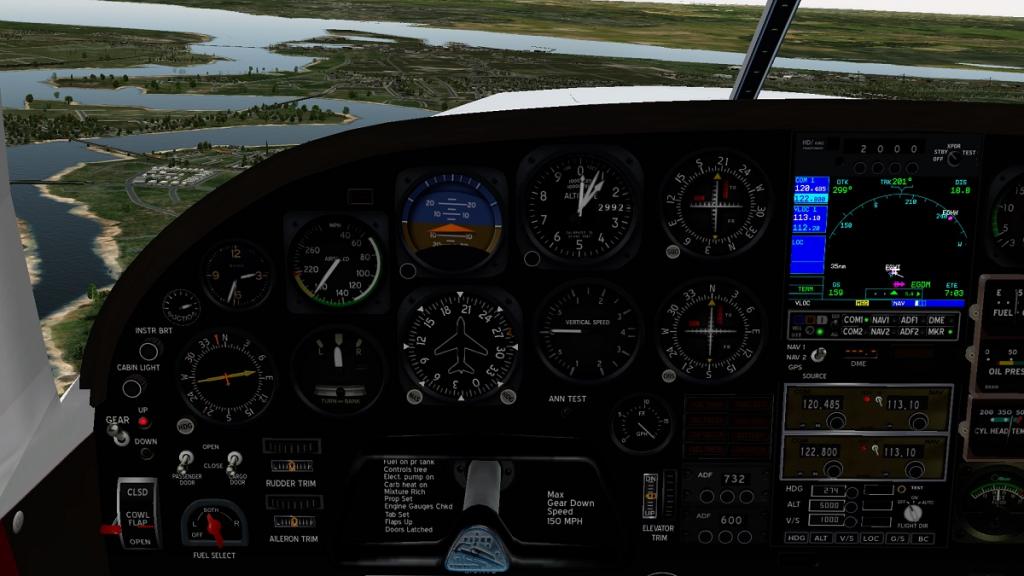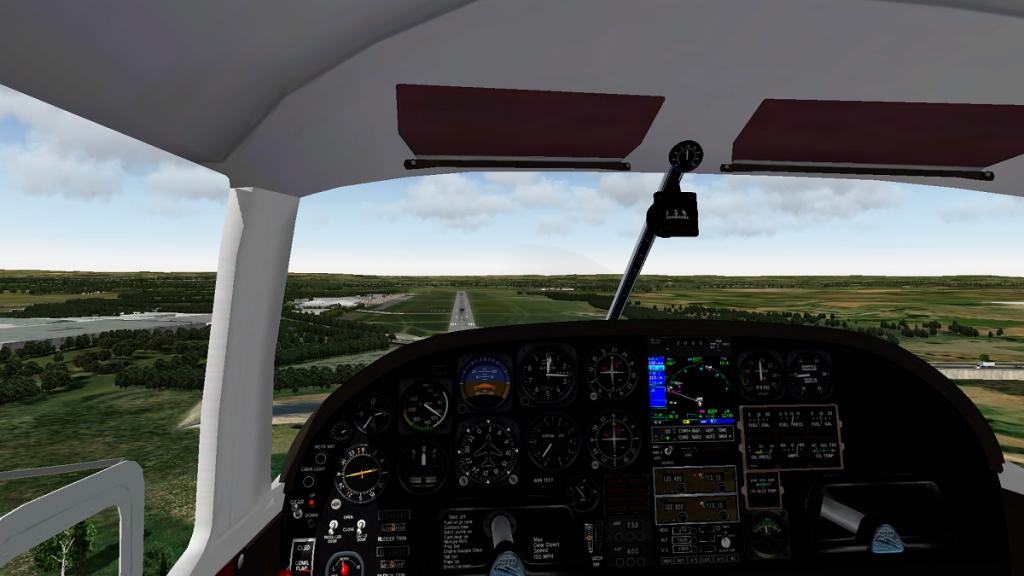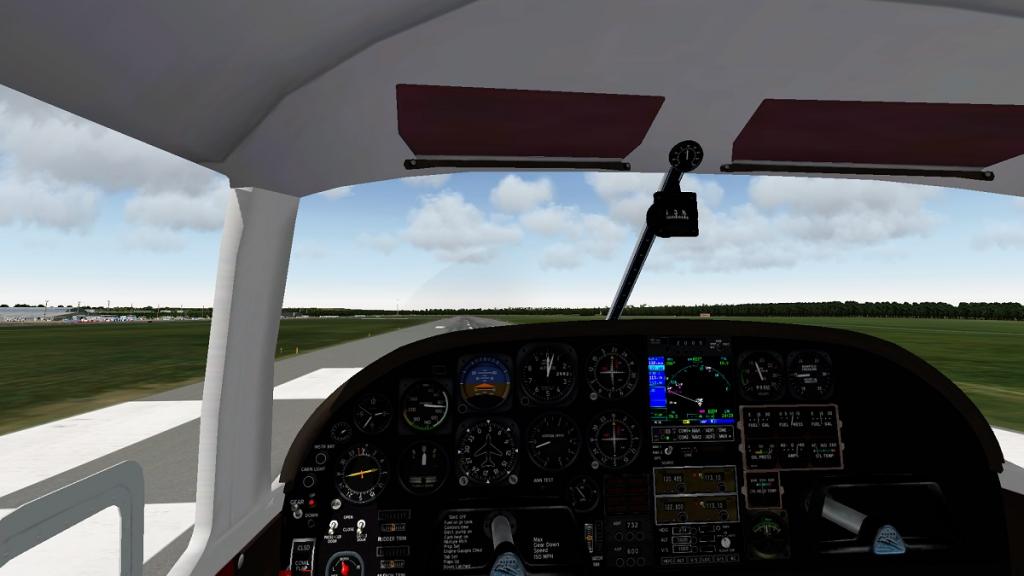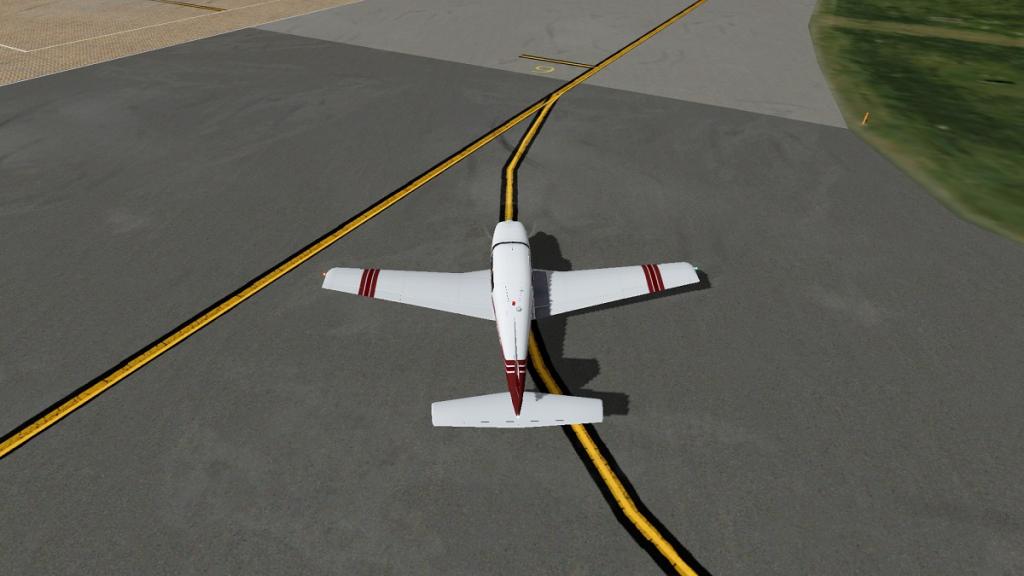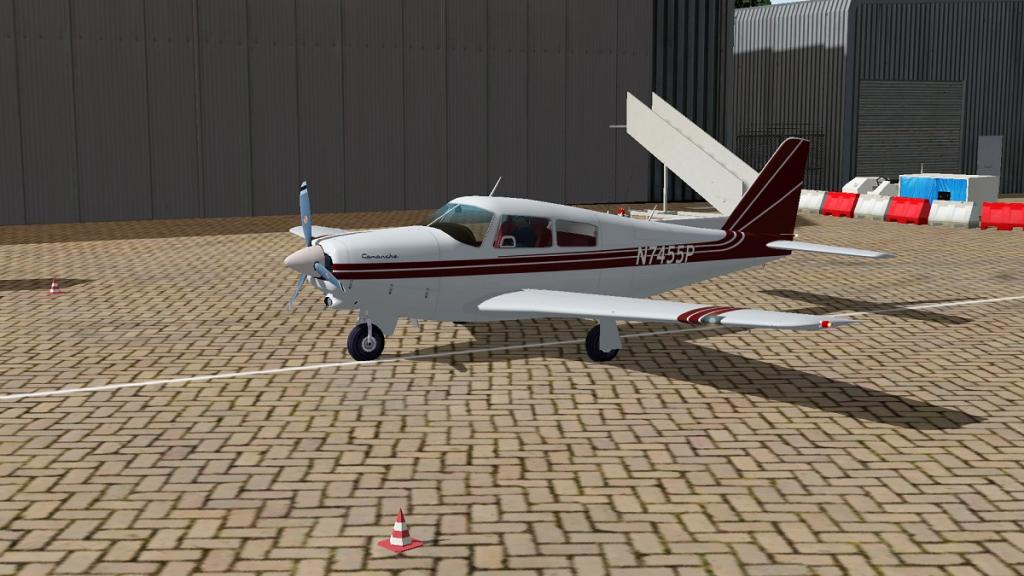Search the Community
Showing results for tags 'piper'.
-
http://newbluejournals.files.wordpress.com/2014/03/image.jpg Aircraft Review : Carenado Piper PA28 181 Archer II Route : VFR Circuits at EGKK - London Gatwick Carenado make the best general aviation aircraft payware, but does this Piper Archer live up to Carenado's high standards? Well I will get to the main message of that in the conclusion but first its time to analyse everything. Despite the size of this small GA plane (general aviation) it is very complex. Carenado have really showed their talents in this plane, it is absolutely fantastic! Over the next few paragraphs I will describe everything about the plane and give an overall summary. Below is a list of features for this aircraft. According to Carenado: - SASL plug in added functionality - 32-bit and 64-bit Mac, Windows, and Linux support. - Stereo 3D sound, with new dynamic effects - Custom prop, which adds realism to the spinning prop etc. - 2D pop-up windows to control camera presets, FOV etc. - Interior lighting optimized for X-Plane v9 and v10. - Overhauled lighting system. - Strobe lights blink in a custom pattern and order. - Landing light features tightly-focused “glare” effect. - Navigation lights have been improved. - Improved ground handling. We start we some real life pictures of the Piper PA28 181 Archer II which can compare to the model made by Carenado, these pictures show the cockpit and the exterior. From the real life pictures you can tell this small GA is great fun to fly, and from past experience I can tell you it most definitely is! With a 180 HP Lycoming engine and an advanced Garmin G1000 Avionics Suite, the Archer is a modern and reliable aircraft for both teaching and cross-country flying. All Specs can be found by clicking the above picture. Having flown this aircraft prior to this review I can say this plane handles lightly, with a rotation speed of roughly 65kts and a cruising speed of 128 ktas, its the feather of the skies. Now onto the Carenado Archer! Exterior The first things I am going to evaluate are the textures of the aircraft. We begin outside which I can easily say looks stunning! From every nut and bolt to door seems can be seen at a good resolution which is always nice when flying in VFR (visual flight rules). However the outside visuals cannot be described as crisp. As well as high resolution on the side of the aircraft we can also find this on the wheels, the tires are crisp pixel sharp and even reflect the sunlight! When in “chase” mode a 3D pilot appears in the cockpit, this is a nice effect when viewing the externals although there should be an option to get rid of him! But he is not just sat static, his head turns according to the input of your flight controls as well as his arms to the yoke and throttle and his legs to the rudder. The prop has been modeled with great care however as the textures are at an acceptable standard we can still find that two logos are blurry (see picture above) but, the prop is only static when the aircraft is stationary so this can go un-noticed. All outside lights have been modelled well especially the navigation lights on the edge of the wing. All the control surfaces have the delay of input movement just like on the real Archer, and the control surfaces are also modelled well. The main feature that stands out though is the reflections on the tires, this is a stunning feature as the sun wraps its rays around the tire. This is also important though as the hear is not retractable, so when your in 'chase' view taking in the scenery, you can constantly see it. 3D Cockpit Moving through the door and into the 3D cockpit the textures are at an amazing resolution, this can be expected as all carenado models are! I believe that the images below speak for themselves, as you can tell the textures in the 3D cockpit and surroundings are photo-realistic which adds to the immersion. The seats and yoke have a weathered effect which adds more realism when flying, it is not an old and battered model nor a brand new plane, but just right for a good weathered look and feel. Moving down toward the floor we find an aluminium plate as a floor scratch/foot pad which has a photo-realistic finish along with the pedals which perfectly match the real ones! Looking back up to the ceiling of the aircraft we find two lights which are interactive. One is a general lamp whilst the other is a night vision light for night VFR flying. There are also animated sun-visors with information on them however the information is blurry. But all information needed looks fantastic if you print out the documentation.The 3D gauges in the aircraft are spectacular the textures on these are great too. Despite living in the 3D cockpit when flying I never had a loss of frame rates which was good, my average FPS was 31. The radio stack and all other knobs are easy to use, this helps a lot if you are flying on vatsim. Above is a mounted compass with a photo-realistic casing, the compass is well positioned meaning it does not interrupt your visual display. Near to this is a window which is nicely animated, sound is also affected when opening or closing the window which adds to the realism when in the 3D cockpit. Even the compartments on the armrests are animated! Also I have a comment which may be debated in the comments, space awareness. To help you understand I will explain. Everything has been positioned well in the cockpit despite whatever filed of view angle you have set in the pop-up option menu everything remains to a realistic degree. This plane will be my first of choice to try with the upcoming release of the Oculus Rift VR headset! As its so close to the real thing! The option menu’s are a great feature of this aircraft, you have two options to choose from, “camera” or “options. The camera menu offers a wide range of camera shots whilst flying, see the picture below. However despite this great camera option there is a slight snag, by the way this is NOT a bug of any kind. For instance I have a 3D cockpit button and a chase button assigned to my hardware flight controls, if you are in the 3D cockpit and switch a camera view via the menu when you go to chase view everything is normal. However when going back to the 3D cockpit using my assigned button I go back to the previous view set by the menu. This gets slightly annoying at times but does not affect anything to do with the plane or my view of the plane. There are two menu’s that are 2D pop-ups which can be accessed on the side of the screen or on the panel in the clicking zones. The camera menu was described in the last paragraph so I will now explain the nice features and animations of the options menu. The first option is used to open the passenger door, the second opens the baggage door, the third triggers static elements, and finally the last option is for wheel fairings. All of these options work perfectly and with ease, changing the options during flight does not effect the frame rates. Night lighting is a big issue with many planes, but not this one. Outside you have the navigation lights and the landing lights, all lights effect the surface glare of the plane. Moving back inside there is a option of three lighting affects. In the cockpit there are two lights on the ceiling, one is for night lighting on the panel which is controlled by a knob and the other is for passenger lighting controlled by a switch. The only thing I don't really like about the ceiling lights is the lack of 3D. It would be nice to see a rounded dome shape on these lights, but mainly your looking out the front windshield so this doesn't bother me too much. The third effect is for integral lighting on the gauges, this scan be controlled by a scroll positioned next to the outside lighting switches. Placed together all lights create a pleasurable night flight experience. Liveries Now to the liveries, excluding the default white paint there are an additional four liveries with this aircraft (pictured above) which are pretty nice. All liveries have been based on real life replicas which is a neat feature of this plane, as a result of this if you have your PPL I am sure you will recognise these like I do! All liveries have reflections etc.. And make the aircraft a beauty to fly. All liveries have the option for wheel fairing's on/off. You can get some extra liveries on x-plane.org under the downloads section but not many which is a shame. When I was flying for real in the Archer the plane had the Gold_Blue skin, its not identical but its similar and I am sure there are many American variants! Flight Dynamics Having flown the real Piper Archer myself I can comment on the flight dynamics of this aircraft compared to Carenado's version. So first I will start with the in-air model. The model of this aircraft behaves quite realistic however it cannot be compared exactly to the real thing. The real Archer behaves with a delay, as you would expect, however Carenado's model does not simulate this to a detailed extent. This model from Carenado is extremely responsive, and if the controls are held in a certain place the aircraft will dive and spin around, this simply wouold not happen in the real Archer. The next test was the stall test. Throttles back, pitch up, and enter stall. Carenado's version responds very quickly, in fact too quickly. When the throttles are applied again and the nose is pitched down the aircraft recovers fast, this is unlike the real Archer as when I conducted a Stall in the real thing it took a lot longer to recover. With throttles and flaps full for take off at a speed of 70 KTAS the Archer "sticks to the ground" this feels very realistic. When pulling back at take off speed the Archer wants to resist as though its very heavy, this feels real and the same as when I took this plane for a spin in the UK. Also when taxiing this plane it took 1/5" throttle to get it moving, in x-plane its a lot less. Overall the flight dynamics are "Ok" at an acceptable level. To lower the response time it may be worth changing the joystick settings. However its not necessary to have an enjoyable flight! Sound Now we move onto sound. The sound for this aircraft is phenomenal, when the throttle is 1/4 open the prop sounds normal, then when the throttle is positioned 2/4 open and you reach 2000 RPM the sound changes and you are then listening to many different .wav files playing. The sound is so close to real, but it does not pan around you like in the new Carenado Mirage. Its a shame but this is an older plane of Carenado's, although in the version 2 update many new features were added with the help of 64 bit processing. To hear this for yourself I recommend visiting you tube to take a listen. As highlighted earlier the door and window changes the sound heard in the cockpit, just like in real life! Conclusion Overall I would highly recommend purchasing this aircraft, whether you are a beginner or post PPL this aircraft will become one of your favourites by far. The systems and animations all simulate the functions just like a real life archer. It is a Carenado plane, Carenado has quality written in its name, this Archer wont disappoint. Another thing is Frame rate. My x-plane settings are all relatively high, despite this fps on this aircraft is an average of 31. This is great as my computer can handle detailed scenery, cloud puffs and extensive framerate killing options. I suffer absolutely no lag when flying this beauty. The only bad thing about this aircraft would be the unclear textures in some areas such as the cockpit interioir roof and prop. Apart from that this is a great plane to add to your virtual hangar! Is it worth buying this aircraft? Yes! Well, its available on the x-plane.org store for the price of $24.95 : Carenado PA28 181 Archer II Carenado Aircraft support: Click here Reviewed by : Joe ©copyright 2014 : X-Plane Reviews Technical Requirements: Windows Vista or Windows 7 (32 or 64 bits) or MAC OS 10.6 (or higher) or Linux XPlane 9.6/9.7 or XPlane 10.11 (or higher - 64 bit compatible) Pentium 2 GHz - 4GB RAM/1GB VRAM 250MB available hard disk space Version 2.1 (last updated June 2013) Review System Specifications: Computer System: - Intel Core i5 3330 @ 3.00GHz - 4.00gb of RAM - Geforce GTX 650 Software: - Windows 7 64 bit - X-Plane 10 Global version 10.25 - Saitek Pro Flight Yoke System - Carenado PA28 181 Archer II
-
Aircraft Review: 1963 Piper Comanche 250 Route : VFR Circuits at EGHI Southampton International When you think of Heinz Dziurowitz you will most likely think of many GA (general aviation) aircraft that are on the .org store with most being at a good standard quality and low price. Heinz's latest release, the Piper Comanche 250, is no exception to this. With fun and good modelling of the exterior this GA aircraft can be brilliant to fly for quick flights! From analyzing images you can see that the aircraft Heinz produces are not quite on the same quality as for example Carenado aircraft however all of Heinz's aircraft are much cheaper. But quality level I am referring to extremely detailed modelling, texturing and flight characteristics. The Piper PA-24 Comanche is a four-seat, low-wing, all-metal, light aircraft with tricycle retractable landing gear. More about the 250 variant (from wiki): In 1958 Piper introduced a 250-horsepower (186 kW) version using a Lycoming 0-504 engine, giving the PA-24-250 Comanche a top cruise speed of 160 kts (185 mph; 298 km/h). Most 250s had carbureted Lycoming O-540-AIA5 engines, but a small number were fitted out with fuel-injected versions of the same engine. Early Comanche 250s had manually operated flaps and carried 60 US gallons (230 L) of fuel. Auxiliary fuel tanks (90 US gallons (340 L) total) became available in 1961. Electrically actuated flaps were made standard with the 1962 model year. The aircraft's gross weight was increased from 2,800 pounds to 2,900 pounds in 1961, making the useful load 1,270 pounds. During this review I have used the Saitek Pro Flght Yoke and Rudder Predals, I have kept the same settings for the yoke setup so I can carefully examine flight dynamics. So, what's the Heinz version like of the Comanche? Well, I decided to take a VFR Circuit around Southampton Airport (UK) , to find out! I will now describe my encounter... I found myself at EGHI - Southampton, parked on the ramp at around 11:00am , the weather report wished a pleasurable day for a circuit. First I start with a walk around inspection of the PA-24 Comanche. Features: Integrated Garmin GNS 530 Highly detailed 3D cockpit Detailed exterior Night Textures Additional paint schemes Includes 2 versions Regular version Tip tank for longer trips System Requirements: Windows, Mac or Linux.X-Pane 10.30 or higher - 32 and 64 bit compatible 4Gb RAM/ 512Mb VRAM Walk Around: The exterior model of the Comanche has been modelled very well with even the smallest of details added, such as the vibrating engine I noticed. The attention to exterior detail is very good. The fuselage and wings have been modelled with precision along with small features such as peto tubes. The landing gear has also been modelled very well, the wheels are shaped proportionally and everything is how you would expect it to be. The propeller has also been modelled with detail when static you can clearly see the iconic shape of it. However textures look a little bright and out of contrast, I think that the Comanche would really benefit from weathered textures. Textures where there are shades around the bolts and streaks of oil leaking out of the fuel cap running along the wing, things like that could really help the amazing modelling stand out. Although the texture on the propeller is OK, that looks very detailed and at a high resolution. I am not saying that all of the exterior textures are low quality as they are not, they could just benefit from a weathered look and feel. All of that sad for the rest of the exterior instead of the wheels, the tire texture is absolutely spot on in terms of realism. 3D Cockpit: The 3D cockpit is OK although there are more detailed cockpits on the market if you are one for eye candy, but you must remember the very low price of this model. The modelling of the 3D cockpit is pretty basic to be honest, the panel looks flat and 2D from the captains eye point and the rest of the interior has been modeled very basically. Also textures seem to be a bit basic as well inside, the seat texture is OK however the panel and side/ roof textures really are plain. As you would expect most instruments are animated and some other nice features such as the passenger door and cargo door. The cargo door switch also opens the cowlings over the engine which is a nice feature although you do not have an option for that specifically, the cowling doors open and close with the baggage doors. On the co-pilots seat there are maps and charts which are a nice edition. The windows don't seem to be custom made, by this I mean that there are no dirt marks around the window ledges etc.. However inside still looks good without that feature. In the cockpit as always you get the pilots standard six and a the new default Garmin 530 on the panel. The 3D cockpit textures are very bright and maybe a little out of contrast, the red is quite blinding when looking around the cockpit, I think if this texture was a little darker then this issue would be solved. The sun blinds are not animated but to be honest I don't really use them anyway when flying. This may be different with the integration of the oculus rift which I may need to be able to use the sun blinds then! The piper rudder pedals are a nice edition to the aircraft,a bit blurry but a nice edition to have, the rudder pedals are also animated. Going lower down into the cockpit the seats seem very low to the floor, this may be correct for how it is in the real aircraft but it seems a little too low! Apart from that the rest of the 3D cockpit has been modeled to precision of where things are placed and there sizes. Also another strange thing, the landing gear toggle is a normal switch like what you would have for your beacon lights, this may be correct according to the real aircraft however I am very used to a lever of some sort somewhere in the cockpit! Liveries: Four liveries are included with the Comanche, all liveries are of the same quality and none have a weathered look. Each livery has been made with precision and to me each livery resembles that 1960 Piper look and feel. As you can see you get a wide range of liveries to choose from, all apart from a blank livery to design your own but maybe this will get added in the future. As well as the liveries above you may also be lucky for some people to post some on x-plane.org for you to freely download. Model Variation: When you purchase the Comanche you get two variant models. The first is the main focus of the review above, the second is the same but with tip tanks which extends the aircraft's range. The interior model is very much the same apart from the grey texture scheme which I prefer over the bright red. Externally is where the majority of the changes are, the tip tanks have been modeled carefully and are identical on either wing, that is obviously something you expect however sometimes models can vary. The flight dynamics of the tip tank Comanche is very much identical to the normal Comanche, there was not a considerable difference that could be spotted. Documentation: You get all of the documentation you will need in order to successfully operate and install the Comanche. You get one PDF (Portable Documented Format) which explains everything you will need to know. You then also get three more text files which open in notepad (windows) or such programme on Mac. The three text files are Copyright, Contact Info and operations. Operations is a key file to successful flight, it contains all procedures you will need to operate the Comanche, my opinion is that the Operations content would be much better as a section in the manual therefore it can be easily printed. Night Lighting: The exterior night lighting of the Comanche is OK, its everything that you would expect really, a rotating beacon and casting landing lights. You can also see the lights of the hangars at Southampton Airport casting over the right wing. However the interior night lighting is somewhat different to what I am used to. The interior lighting does not include any 3D per pixel lights, as you turn up the cockpit lights the texture of the cockpit brightens which for me is lower quality than normal. Normally you get a light bulb which very cleverly looks as though it is casting light into the cockpit. In the Comanche in the dark I couldn't find out where the light was coming from! it virtually just is the cockpit textures lighting up. It's perfectly fine if are not an eye candy simmer however on payware aircraft I do like to see per pixel lighting. But you must remember the low price of this machine. Normally payware aircraft are much more expensive than the price of the Comanche. Sound: The sounds of the aircraft are as you expect them to be, nothing stands out and makes it extremely immersive however the sounds are quite good. On start up you can hear the engine choke and then the running sounds. like I said, no sounds stand out to make me feel as though I have just started a real Comanche however each sound has been placed well. Something I didn't notice though, 3D sound. When circulating around the outside of the aircraft I did not hear a more clean sound when close to the engine and a more lower pitched roar moving toward the rear of the aircraft, things like that are very good. An example aircraft that has the is the Carenado Piper Malibu Mirage however again this aircraft is cheaper so really you pay for what you get. Conclusion: In conclusion is the Comanche worth a few dollars? Yes! The aircraft is great all around, yes there a few things highlighted in the review that could be changed, edited or added however it is still a great base model to have parked in your hangar. Some textures are great such as the tire textures and the textures for the seats and manuals on the co-pilots seat, as I mentioned a weathered texture would solve a lot of issues of the aircraft looking too clean. Apart from that is is great. The static pilot sits and enjoys the ride with you! He has been modeled and textured brilliantly. It's difficult to fault many things, mostly everything is animated, the vibrating engine is very good. All doors open but not the captains window, however it is there. The landing gear has been carefully crafted and animated. The interior and exterior modeling has been done to a very good standard, the main thing letting it down a little is the interior textures, the red is too bright for me. But little things like this can be sorted out in updates, it's not like the aircraft is not airworthy! Static elements could also be added, that would be a nice feature. Also another improvement could be to have an on screen menu for the doors instead of panel switches, or click-able doors and windows. In a future update that all may be added to this great little machine. The best part about it is the price! It is a good model for the price you are paying, not only that you also get two variants with and without tip tanks. So as well as great fun to fly its also customizable! Where can you find this aircraft? On the X-Plane.org Store of course for $14.95 Get the : Heinz - Piper Comanche 250 1963 - Here. What scenery is that? EGHI Southampton Intl Airport by Pilot Plus. Heinz Aircraft Support : Click here Reviewed by : Joe ©copyright 2014 : X-Plane Reviews Scenery used (payware) : EGHI - Southampton Airport by Pilot Plus. Technical Requirements: Windows, Mac or Linux.X-Pane 10.30 or higher - 32 and 64 bit compatible 4Gb RAM/ 512Mb VRAM Review System Specifications: Computer System: - Intel Core i5 3330 @ 3.00GHz - 4.00gb of RAM - Geforce GTX 650 Software: - Windows 7 64 bit - X-Plane 10 Global version 10.31 - EGHI Southampton - Alabeo C195 business liner Hardware: - Saitek Pro Flight Yoke System - Saitek Rudder Pedals.

























